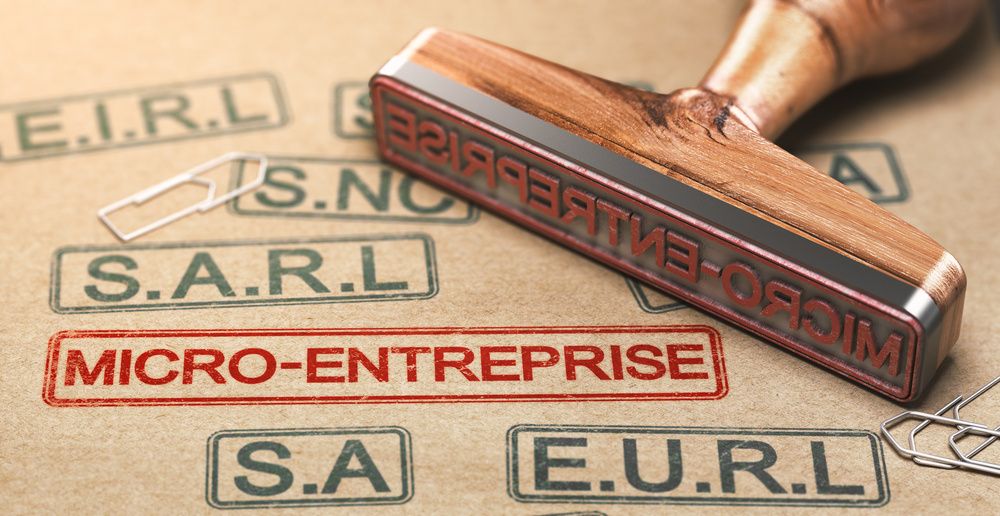Select the appropriate legal status is a major concern for all project leaders. There is no perfect legal form, only one structure adapted to the situation and the desires of the entrepreneur, depending on the nature and size of his project. Here are the factors to consider for choose the right legal status.
Main criterion for choosing the legal status of a company: the desire to associate
La determination of the legal status of a company is, initially, linked to the number of people who contribute to the creation or takeover of a business. If the leader wishes to be alone to run the business, he can then opt for the different legal forms following:
- Sole Proprietorship (IE),
- Sole Proprietorship with Limited Liability (EIRL),
- Sole Proprietorship with Limited Liability (EURL),
- Simplified Single-Person Joint Stock Company (SASU).
The use of an EURL or a SASU can be interesting because it makes it possible to protect the shareholders' assets as well as bring in partners later without having to change the legal status of the company and suffer the resulting tax consequences.
For those who want test an activity without incurring any costs, the micro-enterprise is a wise status.
If the entrepreneur has need to associate with other people, he will then have to choose a social form among the following:
- Limited Liability Company (SARL),
- Simplified Joint Stock Company (SAS),
- Public limited company (SA),
- General Partnership (SNC),
- Society of Liberal Exercise (SEL).
Element n°2 to select the legal status of your organization : heritage protection
If the manager has private capital that he wants to preserve from the constraints inherent in his professional activity, he can direct his approach towards:
- A Physical person :
- THESole Proprietorship with Limited Liability (EIRL) by accurately determining its dedicated heritage,
- THEindividual business with the writing of declaration of unseizability,
- A Company with a liability limited to the sum of the contributions:
- La SARL ou the EURL,
- La SAS or SASU,
- La SA...
In this case, it will be necessary to be careful not to opt for a form in which the partners are indefinitely and jointly and severally liable for the social debts (conditions applicable to the Société en Nom Collectif – SNC – for example).
Not sure which legal status to choose? Register on the digital application offered by
The Entrepreneurs' Corner and use its free
status decision support tool.
3rd criterion for choosing a legal form of business : the importance of the project
According to task size, some legal statutes are more appropriate than others. Projects involving large investments generally require substantial capital and are better suited to capital companies, such as Simplified Joint Stock Company (SAS) or Société Anonyme (SA).
The advantages of SAS are:
- The possibility of creating different types of actions (shares with double voting rights, shares with preferential dividends, etc.);
- The provision, in the statutes, of a accreditation agreement, a disclaimer or an inalienability clause.
In addition, it is possible to provide, in addition to the statutes, a partners' pact or a shareholders' agreement.
Criterion n° 4 to choose the legal status of your company : the manager's social system
Each legal status corresponds to a social protection system for the leader. The latter may either be qualified as an employee“, either be” considered self-employed "
- The manager of an SA, an SAS, a SASU or the non-partner, minority or equal manager of an SARL is classified as an employee. He contributes to the same funds as the latter (with the exception, in most cases, of unemployment insurance) and benefits from the same social protection;
- The majority manager of a SARL/EURL, the business manager of a sole proprietorship, an EIRL or even all the partners of an SNC are considered as " self-employed professionals (TNS) » and contribute to special funds (the RSI for traders/craftsmen, the MSA for farmers and the URSSAF, sickness and old age for liberal professionals).
Assimilated salaried workers benefit from better social protection than non-salaried workers in terms of healthcare reimbursement and pensions, but their cost is also higher for the company. This protection gap is increasingly reduced thanks to the option, for self-employed people, to take out contracts with private companies that are deductible from the company's profits (Madelin contracts for example) and cover a multitude of risks ( mutual, pension, etc.).
La position that the entrepreneur's spouse wishes to take is also decisive in the choice of the legal status of the company:
- Collaborating partners : status open to the spouse or partner of a company director as well as to the spouse/partner of a majority manager of an SARL or EURL with no more than 20 employees on the dual condition that he actually participates in the activity and that he is not a partner of the SARL.
- Employed spouse : status open to the spouse or partner of the head of the company or the manager of a company under the following conditions: effective participation in the activity, presence of an employment contract and adequate remuneration for the services rendered.
- Partner spouse : status open to the spouse or partner of the manager of a company associated with it.
The terms of calculation and collection of social security contributions for self-employed workers (non-employees) depend on the company's tax system (see § 5). When the company is subject to corporation tax, social security contributions are calculated on the basis of the remuneration received (possibly increased by the share of dividends received in excess of the threshold of 10% of the capital and current account contributions for SARL/EURL/SELARL). When the company is subject to income tax, social security contributions are calculated on social income (i.e. restated accounting profit), regardless of whether it was fully received by the manager or No.
Five criteria to consider when choosing the legal status of the company : the tax system
In the same way as in social matters, each type of legal structure has its own tax base, with sometimes the possibility of choosing another form of taxation of profits.
There are two profit tax methods :
When the company is subject to income tax, it is its partners who pay it in their name and on their behalf. Depending on the type of activity (commerce, crafts, agriculture or liberal profession), the corresponding profits will be taxed in the categories of Industrial and Commercial Profits (BIC), Agricultural Profits (BA) or Non-Commercial Profits (BNC). Certain categories have special taxation rules based on turnover (for example the micro-entrepreneur, with the micro-BIC or the micro-BNC).
Here is structures that are subject to income tax :
– The EURL when its partner is a natural person (possibility of opting for corporation tax);
– Sole proprietorship;
– The EIRL (possibility of opting for corporation tax);
– The SNC (possibility of opting for corporation tax).
In this case, it is the company that pays the tax (at the common law rate of 25%, with, under certain conditions, the reduced rate of 15% for the first 38 euros of profits). Partners who wish to collect their profits will have to distribute dividends and will be taxed on income tax (at the single flat-rate deduction of 120% or, optionally, at the marginal tax rate at the IR after abatement of 30%) .
Here is corporate tax structures :
– The EURL when the partner is a legal entity;
– The SARL (possibility of opting for income tax for family SARLs or temporary option for the tax regime for partnerships under certain conditions);
– SAS or SASU (temporary option for the tax regime of partnerships under conditions);
– The SA (temporary option for the tax regime of partnerships under conditions).
The use of a structure subject to income tax is particularly attractive if the company benefits from an exemption from profits, for example the ZFU “urban free zone”.
The goal is then tooptimize the tax situation of the company and its manager in :
- determining the partners' financial strategy (do they want to receive all the profits in the form of dividends or do they plan to reinvest them within the company?),
- choosing the most appropriate tax regime according to the tax situation of the manager and in particular his rate marginal income tax,
- performing a trade-off between compensation and dividends…
Additional factors to consider when selecting the legal status of your business
Regulated activities
Some fields of activity require choosing a legal status imposed by law. For example, tobacconists must be managed within an SNC or a sole proprietorship.
Credibility with partners (customers, suppliers, bank, etc.)
In some markets it may be essential to set up a company with substantial capital to get some partner confidence. Proprietary companies (AE, EI, etc.) may be victims of certain market uncertainties.
Comparative table of companies (SARL, EURL, SAS, SASU, SA and SNC)
To help you determine which type of business is best suited to your situation and your project, you will find below a comparative table of the main characteristics of each type of company.
There is no perfect legal status, but rather a legal status adapted to the characteristics of a project and the situation of the entrepreneur.
Are you creating your business? Use one of our partner services:
Create online!

